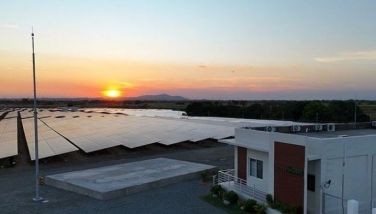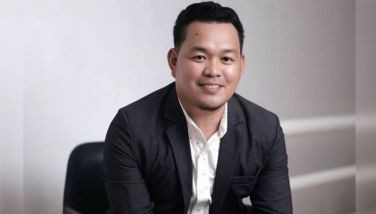2012
As the countdown to 2012 continues, I started making my New Year’s resolutions when I suddenly realized that it could all be for naught. For if some doomsayers are to be believed, the world as we know it will end on December 21, 2012. That’s the end-date of the 5,125-year-long cycle in the ancient Mayan calendar. It is also when pessimists predict that Planet X, a mysterious planet supposedly first discovered by the Sumerians, will collide with Earth and destroy everything in existence. I mean not even one of those ubiquitous SM shopping malls all over the country will be left standing. Maybe this is why Manila Water thinks it’s useless to finish its everlasting street diggings (one of which has forced my kids to pass by the middle of a cemetery on their way to school for the past four months and counting). Fortunately, however, it seems that the only Planet X that really exists is a progressive rock/fusion band in the US. As to the end of the ancient Mayan calendar, well, as one humorist pointed out, maybe they just ran out of paper (or stone), so to speak. Scientists from NASA say that just like our calendars, which end on December 31 each year and start again on January 1, December 21, 2012 simply signifies the end of Mayan’s long-count calendar and another period will begin anew on December 22.
Another discredited doomsday scenario notwithstanding, all this talk of the apocalypse got me thinking about how we are preparing our children for the future. The skies may not fall on us in 2012, but it is undeniable that our world is dramatically changing. Among others, there is the inconvenient truth of climate change; globalization and the unpredictability of an increasingly borderless world; overpopulation; secularization and the apparent decline of religion; and the exponential growth of technology, which, as Albert Einstein worried, may already be exceeding our humanity. With all the challenges that they will have to face in the future, there are times when I wonder if it was a good idea to have brought my children into the world at all. I also can’t help but second guess the choices I’ve made affecting my family, such as leaving the corporate world early and raising and educating my kids in a non-traditional manner. What kind of adults will they turn out to be and will they have the skills and personality to thrive in the years beyond 2012?
According to the so-called “left brain/right brain theory,” the human mind has two different ways of thinking. Simply put, the left side of the brain deals with logic and analysis whereas the right side is concerned with creativity and intuition. When my generation was growing up, the answer to what kind of thinking we ought to develop seemed clear enough. It was the start of the Information Age and the emphasis was on creating the “knowledge worker,” or the well-educated manipulator of information and “deployer” of expertise. Thus did our parents encourage us to enroll in “left-brain” courses such as Engineering, Law, Accountancy, and Computer Programming. “Right-brain” development was dismissed and “relegated to the realm of artsy-fartsy or soft and mushy.” According to best-selling author Daniel H. Pink, however, we are now embarking on a brave new world which he calls the Conceptual Age. In his provocative book A Whole New Mind, Pink argues that the era of the Information Age and “left-brain” dominance is now giving way to a new world where “right-brain” qualities that were once disdained or thought frivolous will predominate. He says that while “left-brain” capabilities continue to be necessary, they are no longer sufficient. Pink believes that the future will belong to a very different kind of mind: creators and empathizers, pattern recognizers, and meaning makers. He identifies six capabilities or “senses” that he thinks characterize the whole new mind the future demands.
• Design. Not just function but also the ability to create things that are beautiful and emotionally engaging.
• Story. Not just argument and data but also the ability to deliver your message as a compelling narrative that goes beyond simple lines of reasoning.
• Symphony. Not just focus and specialization but also the ability to synthesize and to put seemingly disparate pieces together into an arresting new whole or big picture.
• Empathy. Not just logic but also the ability to understand what makes others tick, to forge relationships, and to care for others. Going beyond logic and engaging in emotion and intuition.
• Play. Not just seriousness but also bringing light-heartedness and humor into everyday work and life.
• Meaning. Not just accumulation but also the ability to pursue more significant desires such as purpose, transcendence, and spiritual fulfillment.
While I think that we all intuitively desire a more holistic view of things, most Filipino middle-class parents today would probably consider these “right-brain” ideas too radical or esoteric for their tastes. Despite our rapidly changing environment, many would likely continue to find comfort in the belief that their kids are better off primarily being “left-brain” thinkers who will follow the classic route to becoming “knowledge workers.” And in the end, they may be right. But hey, it sure wouldn’t hurt to be ambidextrous!
* * *
Please e-mail your reactions to kindergartendad@yahoo.com.



















